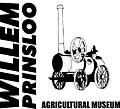|
|
|
| History of the Prinsloo farm |
| The Family |
The well-known Prinsloos of the Transvaal with their interesting history are descendants of a common ancestor, Adriaan Gerrits Prinsloo, of Tergou (Gouda) in the Netherlands, a small town situated near Amsterdam and famous to this day for its Gouda cheese. At the Cape, he married Alida Claassen, a girl from the fishing village Eimuiden (Ameyden) near Amsterdam.
One of the fourth-generation Prinsloos was Willem Petrus Prinsloo of Spreeukloof, nicknamed Willem Spreeu. He married Maria Elizabeth Prinsloo and when the Great Trek started, they initially joined the trek of Gerrit Maritz into Natal, but later moved to the Transvaal.
Willem Spreeu's eldest son, Willem Petrus (nicknamed Willem Wragtig), was born on 19 February 1820 in the Somerset area in the Cape Colony. He married Johanna Maria de Lange at Winburg in 1842. Their eldest son, Willem Petrus (known as Lang Willem), married Cornelia Johanna Prinsloo, daughter of Willem Prinsloo (Willem Goeieman).
|
| Kaalfontein, the farm |
The farm Kaalfontein was given by Willem Wragtig to his eldest son, Lang Willem. The earliest history of this farm can be traced back to a certain J J van der Merwe, who took transfer of 2 802 morgen he had bought from the government on 29 November 1859.
Seven years later, in January 1866, Van der Merwe swopped the land with the `trader', Edward M K Struben, for a plough and merchandise. A year later, Struben sold it to Frederick William Munro, who lived there till his death. Munro had the house, which functions as a house museum today, built by about 1882.
After Munro's death, Willem Wragtig bought Kaalfontein from Munro's estate in October 1889 for ±£6 000.
|
| Family history |
Willem Wragtig himself never lived at Kaalfontein, but on the farm Zorgvliet near Bronkhortspruit. Lang Willem, his wife Cornelia, their daughter and two sons, Klein Lang Willem and Lang Hans, farmed on Kaalfontein.
The daughter died young, and in 1898 Willem Wragtig also died. Lang Willem and Willem Wragtig's other children inherited this Highveld farm as well as a Bushveld farm - Boekenhoutkloof - from their father.
|
| Anglo-Boer War |
In 1898 the Anglo-Boer War broke out. Lang Willem and his two sons were `bittereinders', while Cornelia, Willem's wife, was sent to the Howick concentration camp. The farm house was partly burnt down, but the family had it rebuilt after the war.
After the death of Lang Willem in 1926, Klein Lang Willem and Lang Hans, the two sons, inherited the farm Kaalfontein. Cornelia stayed on in the house that is now a house museum. Miertjie, the great-granddaughter of Willem Wragtig and Cornelia, came to live with her grandmother after 1926, and stayed on until Cornelia's own death in 1938. Miertjie and her husband moved into the house after their marriage in 1954.
Miertjie's real name was Maria Elizabeth and her father was Klein Lang Willem. Both Klein Lang Willem and Lang Hans got married after the war and built homes for their families to the east and west of their parents' house.
Miertjie had only one brother, Boet, also baptised Willem Petrus, but he died in a car accident in 1954. Miertjie donated a part of the farm Kaalfontein to the National Cultural History Museum in 1977, and in 1988 the Museum bought part of Lang Hans's share of the farm in order to extend the site of what became the Willem Prinsloo Agricultural Museum. The house museum was furnished in the interior decorating style of the twenties.
|
|
 Willem Prinsloo Agricultural Museum
Willem Prinsloo Agricultural Museum Willem Prinsloo Agricultural Museum
Willem Prinsloo Agricultural Museum